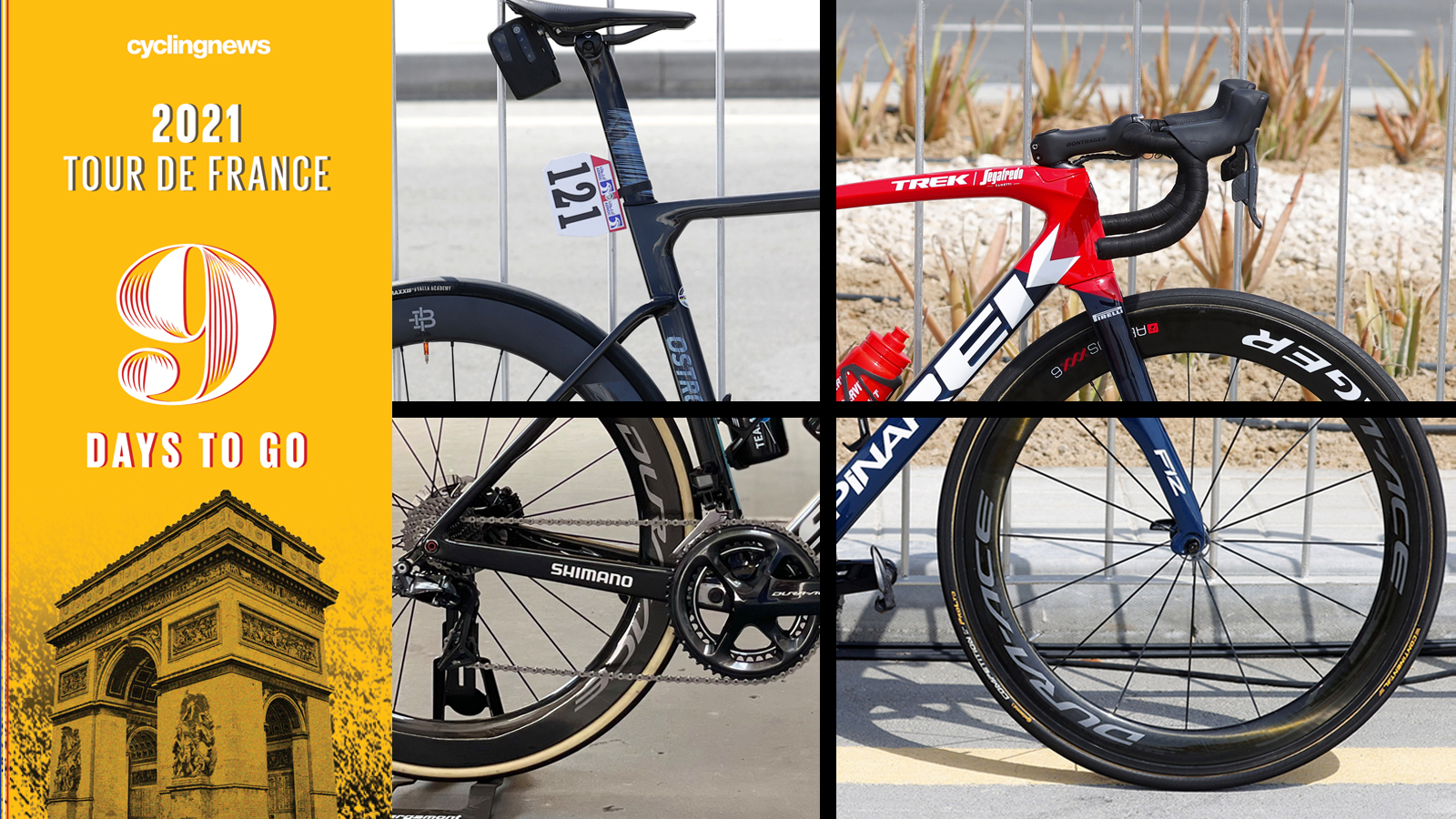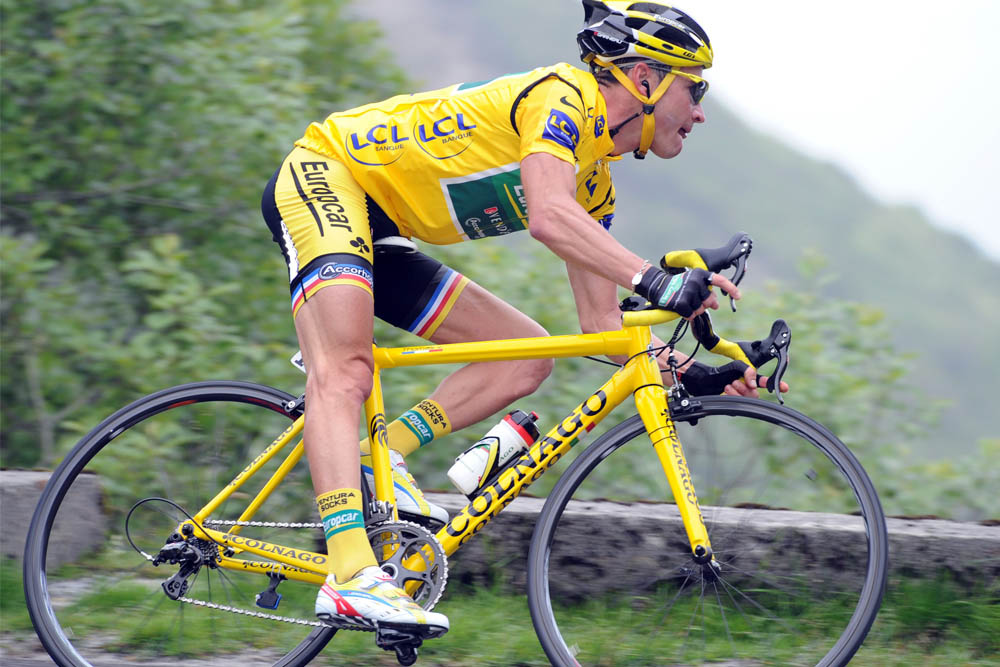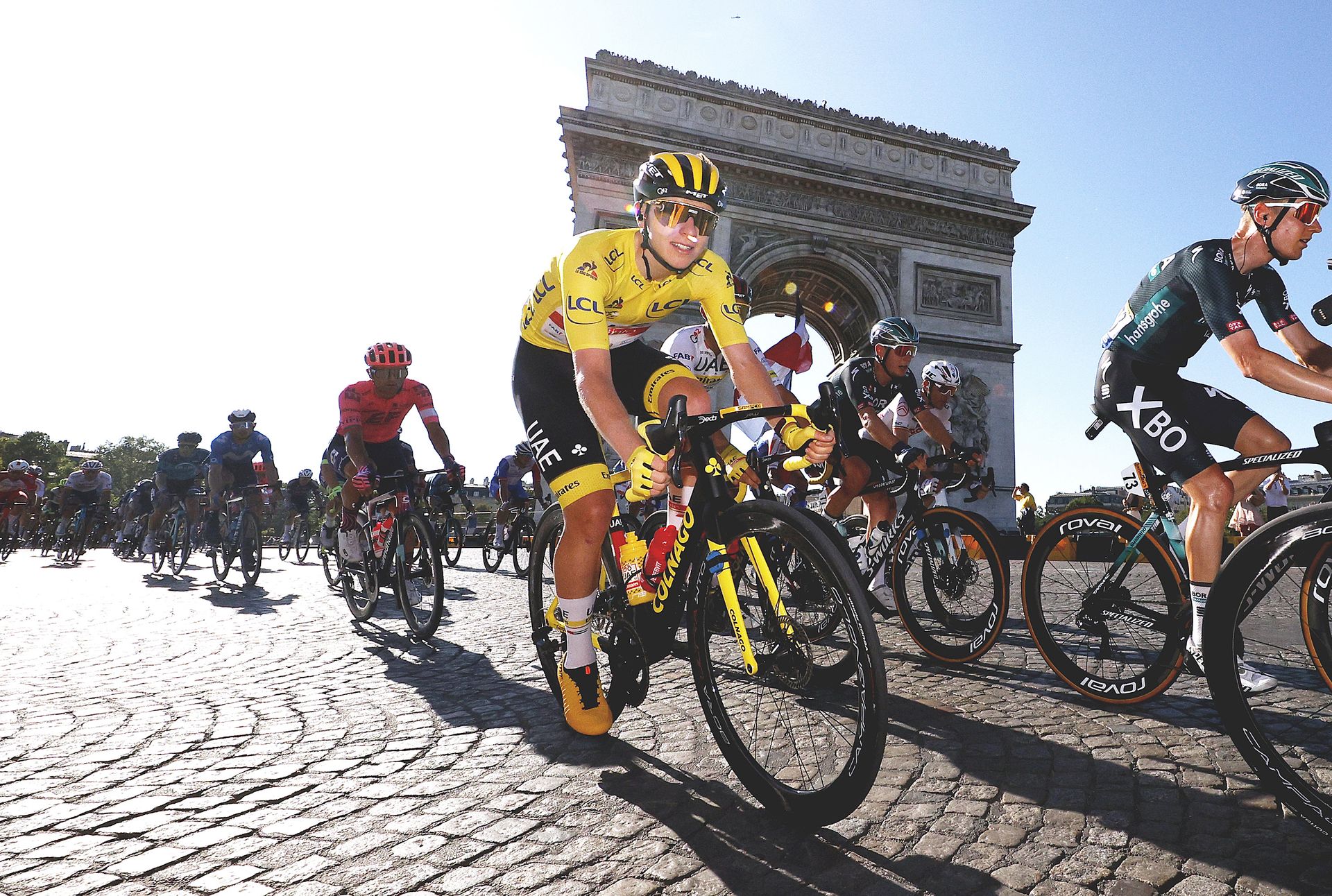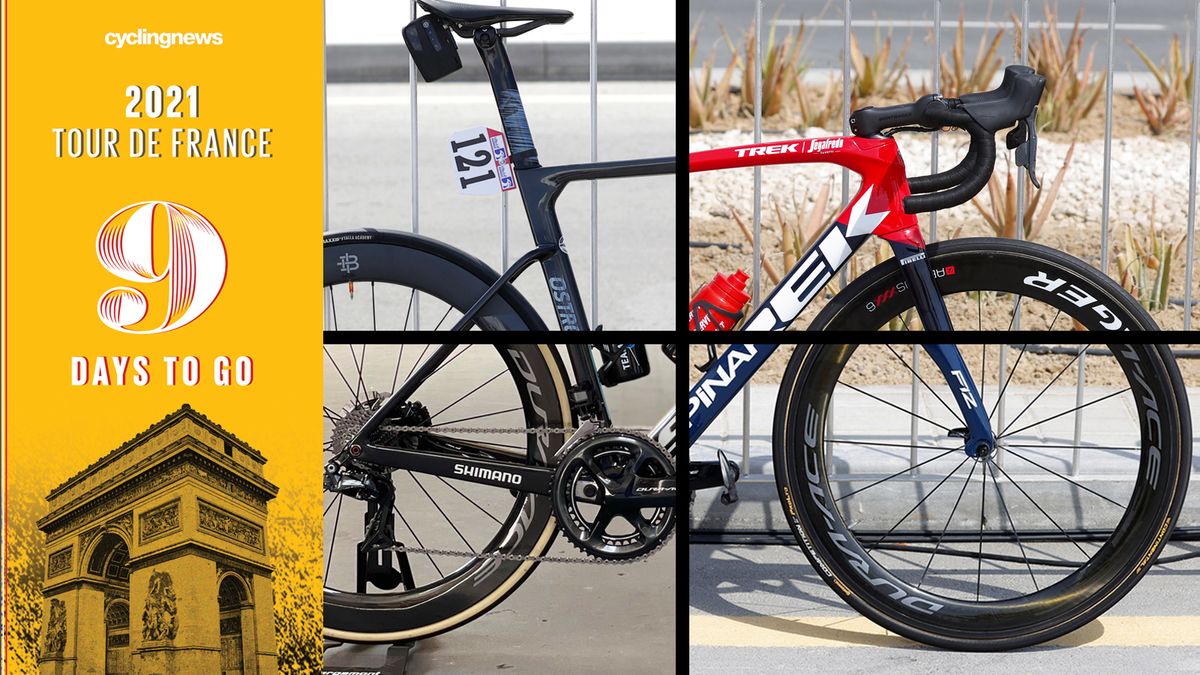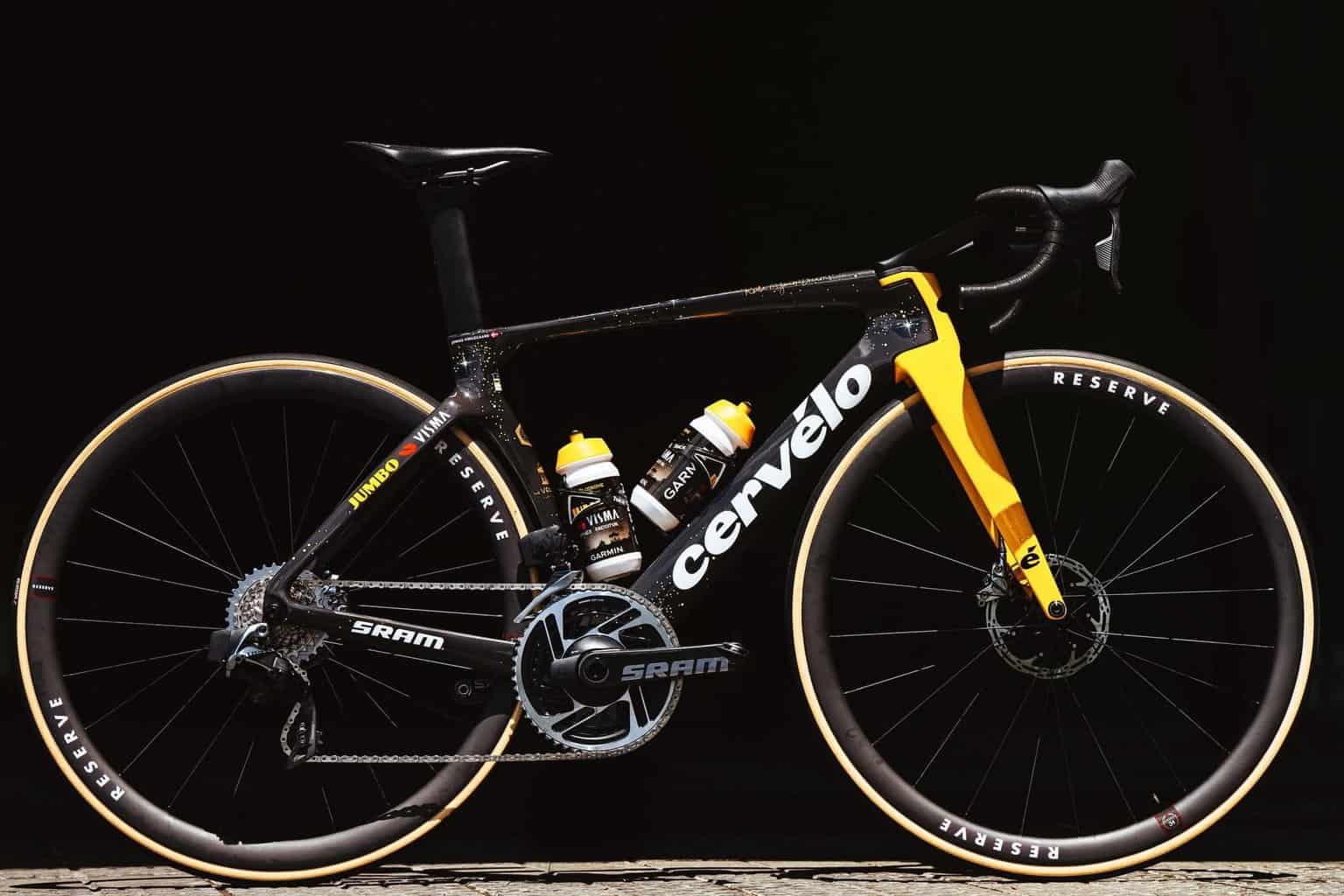What Makes a Tour de France Bike?
A Tour de France bike is a finely tuned machine, designed to deliver exceptional performance, efficiency, and comfort over the grueling three-week competition. The best Tour de France bikes are characterized by their lightweight frames, aerodynamic design, and high-performance components. These features work in harmony to provide riders with the speed, agility, and endurance needed to conquer the mountains and sprint to victory.
Lightweight frames are a crucial aspect of a Tour de France bike, as they enable riders to accelerate quickly and maintain high speeds with minimal effort. Manufacturers such as Trek, Specialized, and Pinarello use advanced materials like carbon fiber to create frames that are both strong and lightweight. These frames are often designed with aerodynamics in mind, featuring sleek shapes and profiles that reduce air resistance and enhance overall performance.
High-performance components are also essential for a Tour de France bike. Groupsets from leading manufacturers like Shimano, SRAM, and Campagnolo provide riders with precise shifting, reliable braking, and efficient power transfer. Wheels and tires are also critical components, with many manufacturers opting for high-quality, aerodynamic designs that minimize rolling resistance and maximize speed.
When it comes to the best Tour de France bikes, the key is finding a balance between lightweight design, aerodynamic efficiency, and high-performance components. By combining these elements, manufacturers can create bikes that deliver exceptional performance, comfort, and value. Whether you’re a professional rider or an enthusiast, understanding the characteristics of a Tour de France bike can help you make informed decisions when selecting the best bike for your needs.
How to Choose the Best Bike for Your Riding Style
When it comes to selecting the best Tour de France bike for your riding style, there are several factors to consider. The first step is to assess your terrain preferences. If you’ll be riding primarily on flat roads, a bike with a focus on aerodynamics may be the best choice. However, if you’ll be tackling mountainous terrain, a bike with a lightweight frame and high-performance components may be more suitable.
Another important consideration is your fitness level. If you’re a beginner or intermediate rider, a bike with a more relaxed geometry and comfortable riding position may be the best option. On the other hand, if you’re an advanced rider, a bike with a more aggressive geometry and high-performance components may be more suitable.
Personal preferences also play a significant role in choosing the best Tour de France bike. Consider factors such as your riding position, handlebar style, and wheel size. For example, if you prefer a more upright riding position, a bike with a taller head tube and shorter top tube may be the best choice.
Popular bike models like the Trek Emonda and the Specialized Tarmac are great options for riders looking for a high-performance bike. The Trek Emonda is known for its lightweight frame and high-performance components, making it an ideal choice for riders who prioritize speed and agility. The Specialized Tarmac, on the other hand, is a versatile bike that excels in a variety of terrain and riding conditions.
Ultimately, the best Tour de France bike for your riding style will depend on your individual needs and preferences. By considering factors such as terrain, fitness level, and personal preferences, you can make an informed decision and find the perfect bike for your Tour de France aspirations.
Top Contenders: Bikes Used by Tour de France Winners
When it comes to the Tour de France, the bikes used by the winners are often a topic of great interest. In recent years, several bikes have stood out as top contenders, including the Pinarello Dogma F8 used by Chris Froome and the BMC Teammachine used by Cadel Evans.
The Pinarello Dogma F8 is a highly advanced bike that features a lightweight frame, aerodynamic design, and high-performance components. This bike was instrumental in Chris Froome’s Tour de France victory in 2015, and its success can be attributed to its exceptional balance of speed, agility, and comfort.
The BMC Teammachine, on the other hand, is a versatile bike that excels in a variety of terrain and riding conditions. This bike was used by Cadel Evans to win the Tour de France in 2011, and its success can be attributed to its exceptional balance of lightweight design, aerodynamic efficiency, and high-performance components.
Other notable bikes used by Tour de France winners include the Trek Emonda used by Alberto Contador and the Specialized Tarmac used by Vincenzo Nibali. These bikes all share a common thread – they are highly advanced, highly customizable, and feature the latest innovations in bike design and technology.
When it comes to the best Tour de France bikes, the key is finding a bike that meets your specific needs and preferences. Whether you’re a professional rider or an enthusiast, understanding the features and technologies that make these bikes successful can help you make an informed decision when selecting the best bike for your own Tour de France aspirations.
Lightweight vs. Aerodynamic: The Great Debate
When it comes to designing the best Tour de France bikes, manufacturers are often faced with a difficult decision: prioritize lightweight design or aerodynamic efficiency. Both approaches have their benefits and drawbacks, and the debate between them has been ongoing for years.
On the one hand, lightweight design is crucial for climbing and accelerating. A lighter bike can make a significant difference in a rider’s ability to tackle steep mountains and sprint to the finish line. Manufacturers like Cannondale and Giant have developed innovative frame designs and materials that minimize weight while maintaining strength and durability.
On the other hand, aerodynamic efficiency is essential for speed and endurance. A bike that can cut through the air with minimal resistance can save a rider precious energy and time. Manufacturers like Trek and Specialized have developed advanced aerodynamic designs that reduce drag and enhance overall performance.
However, there is a trade-off between lightweight and aerodynamic design. A bike that is too lightweight may sacrifice aerodynamic efficiency, while a bike that is too aerodynamic may be too heavy. Manufacturers must carefully balance these competing demands to create a bike that excels in all conditions.
Some manufacturers have addressed this debate by developing bikes that combine both lightweight and aerodynamic design. For example, the Trek Emonda is a highly advanced bike that features a lightweight frame and aerodynamic design. This bike is designed to excel in a variety of terrain and riding conditions, making it an ideal choice for riders who demand the best of both worlds.
Ultimately, the decision between lightweight and aerodynamic design depends on the rider’s specific needs and preferences. By understanding the benefits and drawbacks of each approach, riders can make an informed decision and choose the best Tour de France bike for their own aspirations.
Componentry: The Unsung Heroes of Tour de France Bikes
While the frame and design of a Tour de France bike are crucial, the components that make up the bike are equally important. High-quality components can make a significant difference in a rider’s performance, comfort, and overall experience.
Groupsets, for example, are a critical component of a Tour de France bike. A groupset consists of the gears, derailleurs, and shifters that allow a rider to change gears and control the bike’s speed. Popular groupset brands like Shimano, SRAM, and Campagnolo offer high-performance groupsets that are designed to provide smooth shifting, precise control, and reliable performance.
Wheels and tires are another essential component of a Tour de France bike. A good set of wheels can make a significant difference in a rider’s speed and efficiency, while a good set of tires can provide the necessary grip and traction to handle the demands of the Tour de France. Brands like Mavic, Zipp, and Continental offer high-performance wheels and tires that are designed to meet the demands of professional cycling.
Other components, such as brakes, pedals, and saddles, are also critical to a rider’s performance and comfort. High-quality components can provide the necessary stopping power, comfort, and control to help a rider perform at their best.
When it comes to the best Tour de France bikes, the components that make up the bike are just as important as the frame and design. By choosing high-quality components, riders can ensure that their bike is optimized for performance, comfort, and reliability.
Some popular component brands that are commonly used on Tour de France bikes include Shimano, SRAM, Mavic, and Continental. These brands offer a range of high-performance components that are designed to meet the demands of professional cycling.
Customization: How to Make Your Bike Truly Unique
For riders who want to take their Tour de France bike to the next level, customization is a great option. Customization allows riders to personalize their bike to their specific needs and preferences, making it truly unique.
One way to customize a Tour de France bike is through paint schemes. Many manufacturers offer custom paint schemes that allow riders to choose their favorite colors and designs. For example, Trek’s Project One program allows riders to choose from a wide range of colors and designs, including custom logos and graphics.
Another way to customize a Tour de France bike is through component upgrades. Riders can upgrade their bike’s components, such as the groupset, wheels, and tires, to improve its performance and comfort. For example, riders can upgrade to a high-performance groupset like Shimano’s Dura-Ace or SRAM’s Red.
Bespoke frame designs are also a popular way to customize a Tour de France bike. Riders can work with a manufacturer to design a custom frame that meets their specific needs and preferences. For example, riders can choose a custom frame design that provides a more comfortable riding position or improved aerodynamics.
Companies like Trek, Specialized, and Pinarello offer customization services that allow riders to create a truly unique bike. These services include custom paint schemes, component upgrades, and bespoke frame designs.
Customization is a great way to make a Tour de France bike truly unique and personalized to a rider’s specific needs and preferences. By choosing a custom paint scheme, upgrading components, or designing a bespoke frame, riders can create a bike that stands out from the crowd and provides a competitive edge.
Testing and Review: Putting Top Bikes to the Test
When it comes to choosing the best Tour de France bike, testing and review are crucial steps in the decision-making process. By putting top bikes to the test, riders can evaluate their performance, comfort, and value, and make an informed decision about which bike is right for them.
There are several criteria that are used to evaluate the performance of a Tour de France bike. These include the bike’s speed, agility, and comfort, as well as its ability to handle different types of terrain and weather conditions. Reviewers also consider the bike’s components, such as the groupset, wheels, and tires, and how they contribute to the bike’s overall performance.
Popular review sources, such as Cycling Weekly and BikeRadar, provide comprehensive reviews of top Tour de France bikes. These reviews include detailed analysis of the bike’s performance, comfort, and value, as well as comparisons with other bikes in the same category.
When testing and reviewing a Tour de France bike, it’s also important to consider the rider’s specific needs and preferences. For example, a rider who prioritizes speed and agility may prefer a bike with a lightweight frame and aerodynamic design. On the other hand, a rider who prioritizes comfort and endurance may prefer a bike with a more relaxed geometry and high-quality components.
By considering these factors and evaluating the performance, comfort, and value of a Tour de France bike, riders can make an informed decision about which bike is right for them. Whether you’re a professional rider or an enthusiast, testing and review are essential steps in finding the perfect bike for your Tour de France aspirations.
Some popular review sources that provide comprehensive reviews of top Tour de France bikes include:
- Cycling Weekly
- BikeRadar
- Velonews
- Cyclingnews
These sources provide detailed analysis of the bike’s performance, comfort, and value, as well as comparisons with other bikes in the same category.
Conclusion: Finding the Perfect Bike for Your Tour de France Dreams
When it comes to finding the perfect bike for your Tour de France aspirations, there are several factors to consider. From the key characteristics of a Tour de France bike, such as lightweight frames and aerodynamic design, to the importance of high-quality components and customization options, there are many things to think about.
By considering your riding style, fitness level, and personal preferences, you can narrow down your options and find the best bike for your needs. Whether you’re a professional rider or an enthusiast, the right bike can make all the difference in your performance and enjoyment of the sport.
Remember to also consider your budget and the value that you’re getting for your money. While the best Tour de France bikes can be expensive, they are also a worthwhile investment for anyone who is serious about the sport.
Ultimately, the key to finding the perfect bike for your Tour de France dreams is to do your research and take the time to consider all of your options. By doing so, you can find a bike that meets your needs and helps you to achieve your goals.
Some final tips to keep in mind when searching for the best Tour de France bike include:
- Consider your riding style and the type of terrain you’ll be riding on
- Think about your fitness level and the level of performance you need from your bike
- Look for high-quality components and customization options
- Consider your budget and the value that you’re getting for your money
- Do your research and take the time to compare different bikes and brands
By following these tips and considering all of your options, you can find the perfect bike for your Tour de France aspirations and achieve your goals in the sport.


